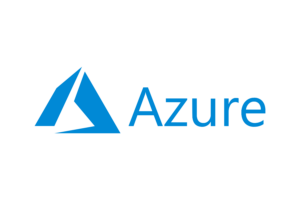Mastering Azure: Proactive Monitoring and Logging
Ever feel like you’re flying blind in the cloud? Imagine having a real-time cockpit view of your Azure resources, pinpointing potential issues before they snowball.
This guide unlocks the secrets of proactive monitoring and logging in Azure. We’ll equip you with the knowledge and tools to:
- Gain deep insights into the health and performance of your applications and infrastructure.
- Identify and address issues before they disrupt your users.
- Make data-driven decisions to optimize your Azure environment.
Get ready to transform your Azure experience from reactive firefighting to proactive problem-solving. Let’s dive in!
1. The Importance of Logging and Monitoring in Azure
In the dynamic world of cloud computing, maintaining visibility and control over your Azure resources is paramount. This is where logging and monitoring come into play. These crucial practices act as the eyes and ears of your Azure environment, providing invaluable data for:
- Proactive Issue Detection: By continuously collecting and analyzing logs and metrics, you can identify potential problems early on, such as performance bottlenecks, resource spikes, or security threats. This allows you to address issues before they escalate into critical service disruptions or costly downtime.
- Enhanced Security: Effective logging and monitoring empower you to track user activity, detect suspicious behavior, and gain insights into potential security breaches. This enables you to implement appropriate safeguards and ensure the protection of your sensitive data.
- Improved Resource Management: By analyzing resource utilization data, you can gain a clear understanding of how your applications and services are consuming resources. This knowledge empowers you to optimize resource allocation, identify areas for cost savings, and ensure efficient cloud resource utilization.
2. Unlocking the Potential: Key Azure Services for Monitoring and Logging
Microsoft Azure offers a comprehensive suite of services specifically designed to empower you with robust monitoring and logging capabilities. Let’s explore some of the key players:
- Azure Monitor: This service acts as the central hub for collecting, analyzing, and visualizing data from various Azure resources. It provides a holistic view of your environment, allowing you to monitor resource health, application performance, and security metrics.
- Azure Log Analytics: This powerful log management tool enables you to collect, store, and analyze logs from diverse sources within your Azure environment. With its advanced query capabilities, you can gain deep insights into application behavior, identify trends, and troubleshoot issues effectively.
- Application Insights: This service specifically focuses on monitoring the performance and availability of your web applications and services. It provides detailed insights into application telemetry, user behavior patterns, and potential performance bottlenecks.
These services, along with others like Azure Security Center and Azure Network Watcher, work together to provide a layered approach to monitoring and logging. This comprehensive strategy ensures that you have a clear understanding of your Azure environment’s health, performance, and security posture.
3. Best Practices for Effective Logging in Azure
While Azure offers powerful tools for logging and monitoring, implementing them effectively requires following specific best practices. Here are some key principles to ensure you’re harnessing the full potential of these services:
1. Centralized Log Management:
- Consolidate logs: Avoid scattered logs across different storage locations. Utilize Azure Monitor as the central hub for collecting logs from various sources like applications, services, and infrastructure components. This enables centralized analysis and simplifies the process of identifying correlations and trends.
2. Define Log Levels and Retention Policies:
- Prioritize effectively: Implement different log levels (e.g., information, warning, error) to categorize the severity of logged events. This helps focus your attention on critical issues while maintaining a historical record of less critical events.
- Manage storage efficiently: Establish clear log retention policies based on compliance requirements and the value of historical data. Long-term storage for less critical logs might be appropriate in an archive format to minimize storage costs.
3. Implement Security Measures:
- Secure your logs: Grant access to log data based on the principle of least privilege. This ensures that only authorized personnel can access sensitive information.
- Encrypt sensitive data: Consider encrypting sensitive data within logs, especially when dealing with personally identifiable information (PII) or financial data. This adds an extra layer of protection in case of a security breach.
4. Leverage Automation:
- Automate responses: Configure alerts and automated actions based on specific log events. This enables you to receive timely notifications for critical issues and potentially trigger automated remediation actions, minimizing downtime and manual intervention.
5. Continuous Monitoring and Analysis:
- Proactive approach: Don’t just collect logs; actively monitor and analyze them to identify potential problems and performance bottlenecks. Utilize Azure Monitor’s powerful analytics capabilities to gain insights and make data-driven decisions for optimizing your Azure environment.
Additional Tips:
- Standardize logging practices: Establish consistent logging formats and structures across your applications and services. This simplifies log analysis and allows for easier correlation of events from different sources.
- Utilize structured logging: Employ structured data formats like JSON for logs whenever possible. This enhances readability, facilitates automated analysis, and enables efficient integration with other tools.
4. Conclusion
The ever-evolving landscape of cloud computing necessitates a proactive approach to managing your Azure resources. Effective logging and monitoring, as explored in this article, act as the foundation for achieving this goal.
By leveraging Azure’s comprehensive suite of monitoring and logging services, coupled with the best practices outlined here, you can:
- Gain real-time insights into the health and performance of your Azure environment.
- Proactively identify and address potential issues before they disrupt your operations.
- Optimize resource utilization and ensure cost-effectiveness.
- Strengthen your cloud security posture through comprehensive monitoring and threat detection.
Remember, logging and monitoring are not an afterthought; they are crucial investments in the stability, security, and overall success of your Azure deployments. Embrace these practices and unlock the true potential of your cloud environment.





